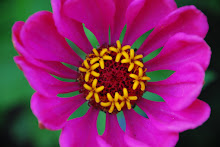
I did some indoor seed starting today. Growing veggies, herbs and flowers from seed is sometimes a more economical way to go than purchasing nursery grown transplants. Depending on what you are growing you can get more bang for your buck. If you are direct seeding into the garden you save the indoor seed starting expenses, but you will have longer to wait until your harvest. If you start seeds indoor you need to have the space, and be deligent about watching the temperature and humidity needs of your seedling babies. Plus you have the expenses of seed starting mix, trays, domes, inserts, peat pots or pellets, and possibly heat mats and lights.
I keep it pretty simple. I direct see into the garden as much as I can like peas, beans, a lot of herbs, all my root crops-carrots, radish, beets, turnips, parsnips, green onions, potatoes, garlic, shallots and most of my leafy greens like lettuce, spinach, chard, kale, mustards, etc. Then I buy transplants of the finicky heat-lovin summer veggies like tomatoes, peppers and eggplants. I usually start my squash and pumpkins indoors or just purchase the transplants from the nursery. I would also start from seed any varieties I know I won't get at the nursery. I don't use heat mats or supplemental lighting.
To get a jump start on this spring I decided to start indoors spinach, chard, arugula, several varieties of lettuce, chives, parsley, summer savory, and several varieties of companion flowers-calendula, nasturtium and cosmos. These are common annuals you can buy transplants pretty inexpensively. But I scored several packages of free seeds that are unique varieties. The plan is in early April when I direct seed these veggies into the garden I can also transplant my seedlings at the same time giving me a jump start on my harvest.
I am no expert at indoor seed starting, but I know a few basics. Always use a sterile seed starting mix. Not a potting soil and not soil from your garden. A seed starting mix is light and fluffy to promote seed germination, it is also sterile. You can buy a commercial brand like Black Gold (whi
 ch is OMRI listed organic) or you can mix your own with a combo of peat moss, earthworm castings and perlite. Once you have your seed starting medium you need some trays and decide if you want to use re-usable plastic cell packs, peat pots, expandable pellets or coir fiber pots. So many choices. Next you need to read about what your seeds need to germinate. Some need darkness, some need light. Some like to be covered in the planting medium, some want to be exposed. Temperature needs also vary. Do your research first before planting.
ch is OMRI listed organic) or you can mix your own with a combo of peat moss, earthworm castings and perlite. Once you have your seed starting medium you need some trays and decide if you want to use re-usable plastic cell packs, peat pots, expandable pellets or coir fiber pots. So many choices. Next you need to read about what your seeds need to germinate. Some need darkness, some need light. Some like to be covered in the planting medium, some want to be exposed. Temperature needs also vary. Do your research first before planting.
When starting seeds indoors I use liquid seaweed. If you read my blog you'll know I use liquid seaweed for pretty much everything. I swear by it. I wet my peat pots with it prior to filling with seed starting medium. Once the seeds are planting I spray them with liquid seaweed. Good stuff.
I think the biggest problem with starting seeds indoors is "damping off" and hopefully you won't encounter this. Indoor seedlings also don't like fluctuation in heat and cold and hate drafts. They are quite sensitive.
I'll let you know how it goes.
In Health & Happiness,
Miss Jolie Ann










No comments:
Post a Comment